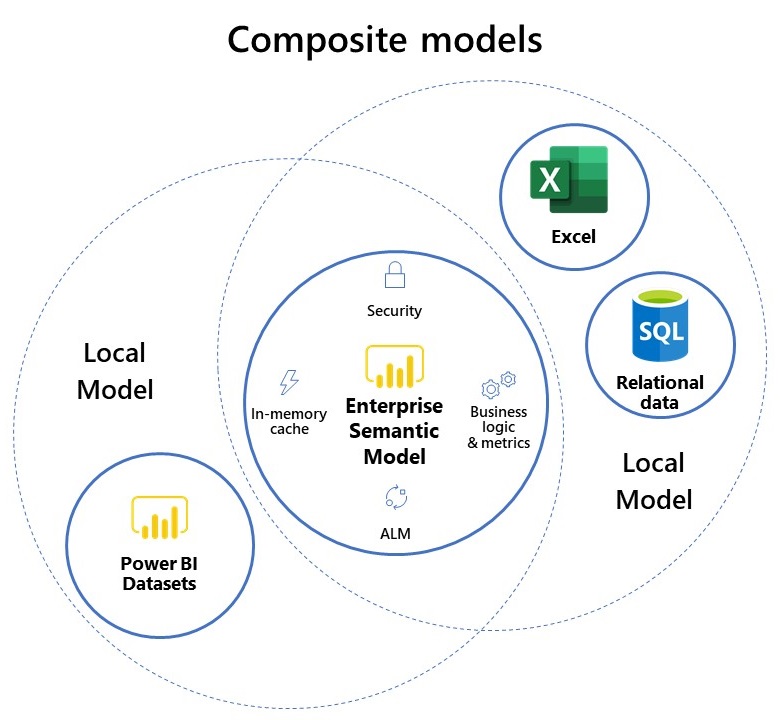Composite models over Power BI datasets and Azure Analysis Services
Important
This content is archived and is not being updated. For the latest documentation, see Microsoft Power Platform product documentation. For the latest release plans, see Dynamics 365 and Microsoft Power Platform release plans.
| Enabled for | Public preview | General availability |
|---|---|---|
| Admins, makers, marketers, or analysts, automatically |  Dec 31, 2020
Dec 31, 2020 |
- |
Feature details
Most organizations provide centralized, certified datasets for their users to build reports. These are either Azure Analysis Services models or Power BI certified and shared datasets. DirectQuery over Azure Analysis Services models allows authors to connect to these datasets, and use composite models to either extend them with their own measures or combine them with other imported data (for example, Excel files). In this way, organizations can scale their enterprise datasets by allowing users to leverage them in more self-service scenarios. Authors can bring in their own local data sources while still leveraging the authoritative Power BI or Azure Analysis Services datasets created by others in their organization.
This can be used with the existing composite models feature to build any combination of one or more connections to Azure Analysis Services models and DirectQuery tables from other data sources, or even imported data can be used for flexible modeling over enterprise and self-service data.

See also
DirectQuery for Power BI datasets and Azure Analysis Services preview (blog)